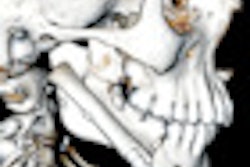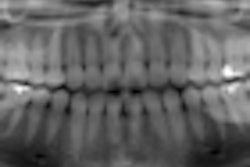Finite element analysis combined with 3D modeling can yield a clinical orthodontic tool for planning tooth movement, according to a study in the American Journal of Orthodontics & Dentofacial Orthopedics (January 2011, Vol. 139:1, pp. e59-e71).
Researchers from West Virginia University used anatomically accurate 3D models reconstructed from cone-beam CT scans to simulate the retraction of a single-rooted mandibular canine with a miniscrew placed as skeletal anchorage. Detailed stress distributions in the implant and peri-implant bone were found, in addition to the effect of the orthodontic bracket hook length and the angulation of retraction force on stress response in the periodontal ligament (PDL).
The results suggest that stresses on miniscrew implants under load are sensitive to changes in diameter, the researchers noted. Overtightening a miniscrew after placement might be a more likely cause of fracture failure and bone trauma than application of tangential orthodontic force. The reduction of stress along the PDL as a result of increasing the bracket hook length might account for steadier tooth translation by force application closer to the center of resistance of a single-rooted canine.
In addition, the relatively minor effect of force angulation on the PDL response suggests that the vertical placement of miniscrews in keratinized or nonkeratinized tissue might not significantly affect orthodontic tooth movement, the researchers noted.
Copyright © 2011 DrBicuspid.com



















